
views
X
Trustworthy Source
Mayo Clinic
Educational website from one of the world's leading hospitals
Go to source
Taking Adrenal-Blocking Drugs

Discuss treatment options for high cortisol with your doctor. High cortisol may result from pituitary or adrenal tumors or long-term use of corticosteroid medications, which can also worsen existing high cortisol levels. Surgery may be the recommended treatment for tumors, and it’s about 80 to 90% successful. If surgery isn’t an option or effective, talk to your doctor about adrenal-blocking medications that stop your body from producing too much cortisol. If you're having a tumor removed, you may also take adrenal-blocking drugs for a few weeks before surgery. For those with serious symptoms, such as severe high blood pressure or a weakened immune system, taking medication before surgery can lower the risk for complications. If you have a tumor that's in a hard to reach location or the risks of surgery outweigh the benefits, your doctor may not recommend surgery for you. If they decide surgery isn't an option, they'll usually recommend a long-term medication regimen to help manage your cortisol levels. Cushing syndrome vs. Cushing disease: Cushing syndrome, or hypercortisolism, is the medical term for a collection of disorders related to high cortisol levels. Cushing disease is more specific and occurs when the pituitary gland tells the adrenal glands to make too much cortisol.
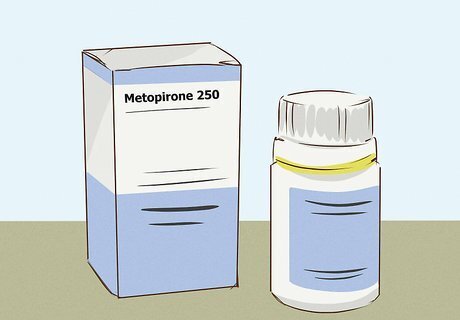
Talk to your doctor about metyrapone to treat acute, serious symptoms of high cortisol. The advantage of metyrapone is that it starts lowering cortisol levels within 2 hours. This makes it a good option for managing severe symptoms in the short-term. A typical starting dose is 250 mg 3 times per day, but doses of up to 8,000 mg per day are sometimes required. Since it can cause cortisol levels to become too low, you’ll need to see your doctor for tests frequently while taking metyrapone. Side effects may include stomach pain, weight loss, and nausea. Tell your doctor if you experience side effects, as they may be a sign that your dose is too high. Metyrapone usually isn't prescribed for long-term management of high cortisol levels. Long-term use of this medication can lead to acne, potassium deficiency, high blood pressure, and unusual hair growth in women.
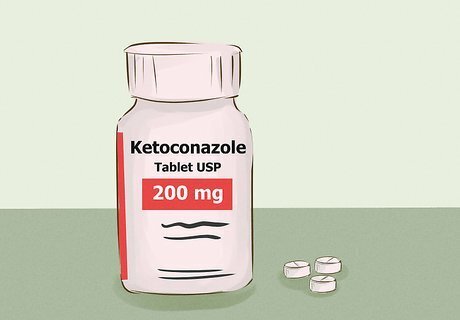
Ask your doctor about ketoconazole for long-term management. Of the medications used to manage high cortisol levels due to Cushing syndrome, ketoconazole is the best-tolerated and most commonly prescribed. A typical regimen involves taking 400 to 1200 mg in 2 to 4 divided doses at around the same times each day. Side effects may include fatigue, nausea, vomiting, diarrhea, headaches, muscle pain, and high blood pressure. Unlike metyrapone, it can take several weeks for ketoconazole to take effect. However, there’s a reduced risk of cortisol levels falling too low.
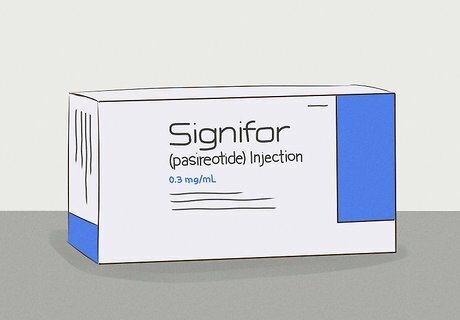
Consult your doctor about pasireotide for inoperable Cushing disease. Pasireotide makes the pituitary gland produce less of the hormone that tells the adrenal glands to make cortisol. Treatment involves either going to your doctor’s office for weekly injections or injecting yourself twice a day at home. If you take injections at home, your doctor will show you exactly how to use your medication. Inject the pre-measured dose into your thigh, upper arm, stomach, or buttock. Choose a different injection site each time you use your medication to help prevent irritation. Side effects may include diarrhea, high blood sugar, abdominal pain, and fatigue; long-term use may lead to diabetes. Your doctor may also prescribe metyrapone or ketoconazole in combination with pasireotide.
Managing High Cortisol Due to Corticosteroids

Ask your doctor about non-steroid treatments for your condition. Corticosteroids are used to treat conditions such as asthma, arthritis, skin disorders, and lupus. If you take a corticosteroid and it’s raised your cortisol to unhealthy levels, consult your doctor about managing your condition with a non-steroid medication. If a non-steroid alternative isn’t available, ask your doctor about delayed-release corticosteroids, which may lower the risk for harmful side effects. For instance, a delayed-release form of prednisone is now available for the management of rheumatoid arthritis. Even if you're able to switch medications, your doctor will need to gradually decrease your dosage amount to wean you off of the corticosteroid. Stopping a corticosteroid abruptly is not recommended.
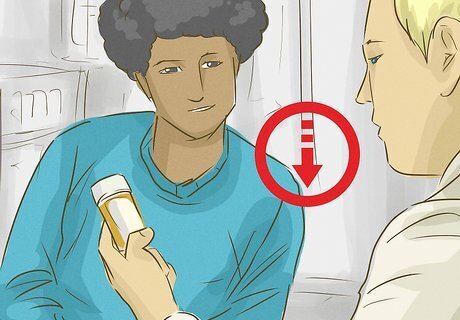
Take a lower dose of your corticosteroid, if possible. If you can’t switch medications, work with your doctor to determine the smallest dose you can take. Ask your doctor if lowering the dose is an option or if you can take your medication on alternating days.Safety Precaution: Don’t lower your dose or stop taking a corticosteroid or any other prescription medication without consulting your doctor. Stopping a corticosteroid suddenly can lead to symptoms of withdrawal and other harmful side effects.
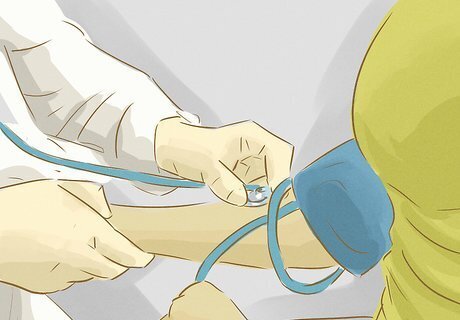
Monitor your blood pressure, blood sugar, and bone density. If you can’t stop taking a corticosteroid, you’ll need to see your doctor for regular check-ups. They’ll need to check for potential health risks, such as high blood pressure, high cholesterol, and bone thinning. To help prevent these harmful effects, maintain a healthy diet, limit your salt intake to 1500 mg per day, and avoid consuming added sugars. Additionally, ask your doctor if they recommend taking calcium and vitamin D supplements.
Trying Natural Remedies
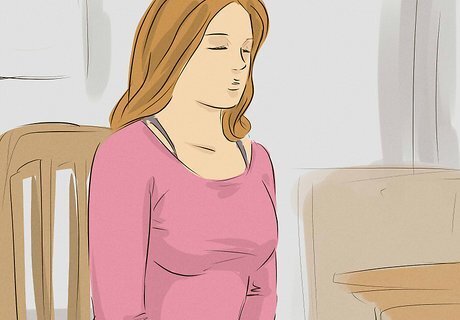
Practice deep breathing techniques. Do breathing exercises regularly to keep your stress and cortisol levels in check. Close your eyes and inhale deeply as you count to 4, and fill your belly with air instead of raising your chest and shoulders. Hold your breath for a 7 count, then exhale slowly as you count to 8. As you breathe slowly and deeply, imagine calming scenery. Picture yourself on a beach, in a tranquil field, or in a comfortable place from your childhood. Continue to control your breathing for 2 to 3 minutes, or until you start to feel more relaxed.

Listen to relaxing music to reduce stress. Play soothing music with a slow beat, such as classical or ambient music. You can listen to music when you feel stressed, or make it a part of your daily routine. You don’t have to be stressed out when you listen to music for it to have beneficial effects. Music can help keep cortisol levels from spiking in stressful situations hours after you’ve stopped listening.
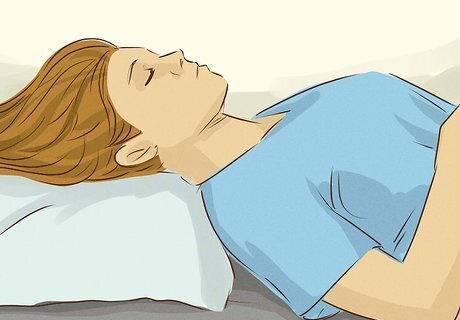
Try progressive muscle relaxation. To perform progressive muscle relaxation, contract the muscles in your toes, then release them. Exhale as you release, and imaging tension leaving your body. After tensing and releasing your toes, contract and relax the muscles in your feet, calves, and thighs. Tense and relax one muscle group at a time, and work your way up until you’ve reached your head and neck. Do progressive muscle relaxation whenever you’re feeling stressed. It can also help you fall asleep, so try it when you hit the hay, too.

Exercise for at least 30 minutes a day. In addition to being important for your overall health, regular exercise reduces cortisol and stress levels. Try to walk, jog, or ride your bike for 30 minutes a day, 5 days a week. On the other 2 days, include strength training, such push-ups, crunches, pull-ups, and lifting free weights.Safety Precaution: Check with your doctor before starting a new exercise routine, especially if you’re not already physically active. Ask them for advice about safely becoming more active.
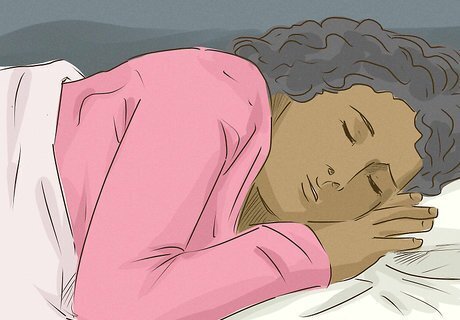
Get at least 7 to 9 hours of sleep each night. Lack of sleep can raise cortisol levels and increase stress. To develop healthy sleeping habits, try to go to bed and wake up at the same time every day. Set aside 1 to 2 hours before bed to relax, and keep your bedroom cool, dark, and comfortable. Avoid looking at electronic screens before bed, since they produce blue light and trick your brain into thinking it’s daytime. If you need to use your phone, tablet, or computer, download a filter app that blocks out blue light. Avoid drinking caffeine later than 2 p.m., and try not to have a heavy meal within 3 to 4 hours of going to bed.
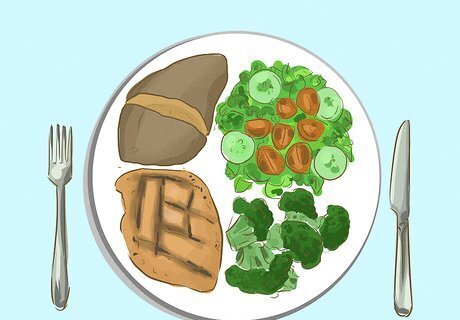
Maintain a healthy, balanced diet. Fill half of your plate with fruits and veggies, go for whole grains, and choose lean proteins, such as seafood and white meat poultry. Include foods in your diet that can lower cortisol levels, such as avocados, blueberries, salmon, and unsalted nuts. Limit your intake of salt, added sugars, and trans fats, which can each increase cortisol. Items to limit or avoid include processed meats (such as bacon and deli meats), soft drinks and other sweetened beverages, fatty cuts of red meat, and fried foods. Avoid skipping meals and low-calorie diets, which can raise cortisol levels. Make sure you’re consuming enough calories per day to meet your daily needs. Learn more about your specific nutritional requirements at https://www.choosemyplate.gov.

Set limits and learn how to say no. If you're starting to get overwhelmed, do your best to stop taking on new responsibilities. Ask for help when possible to avoid getting stressed. If you’re anxious about saying no to someone, remind yourself that watching out for your well-being is your top priority. Set limits whenever possible by saying, “I’d love to volunteer, but this month is crazy for me,” “Thanks for the invitation! I’d love to go, but my schedule is packed,” or “The ABC account is taking up all of my time. Unless you want me to reprioritize, I can’t take on a new project this week.” Whether you have kids or are busy at work, you can’t take care of others or do your best work if you’re burned out.

Talk to your doctor about taking an herbal supplement for stress. Consult your doctor before taking an herb or supplement. Tell them about any medications you take, and ask them to recommend a dosage regimen. There’s evidence some herbal supplements may safely lower cortisol and reduce stress, but most medical professionals recommend against long-term use. Valerian and chamomile may lower cortisol, reduce stress, and make it easier to fall asleep. There are no expert-approved dosage amounts, but a typical daily dose is 400 mg to 1,400 mg. When in doubt, start at a low dose to see how a supplement affects you. Taking a 300 mg capsule of Ashwagandha root 1 to 2 times per day may also lower stress and anxiety. Green, black, and oolong teas contain a compound called L-theanine, which may lower cortisol levels. Additionally, relaxing with a hot cup of caffeine-free tea at night may help you de-stress after a long day.










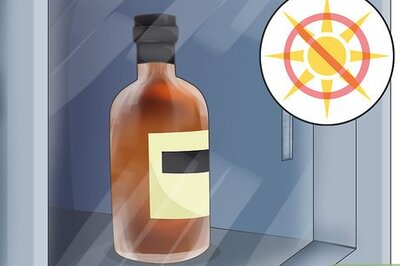









Comments
0 comment